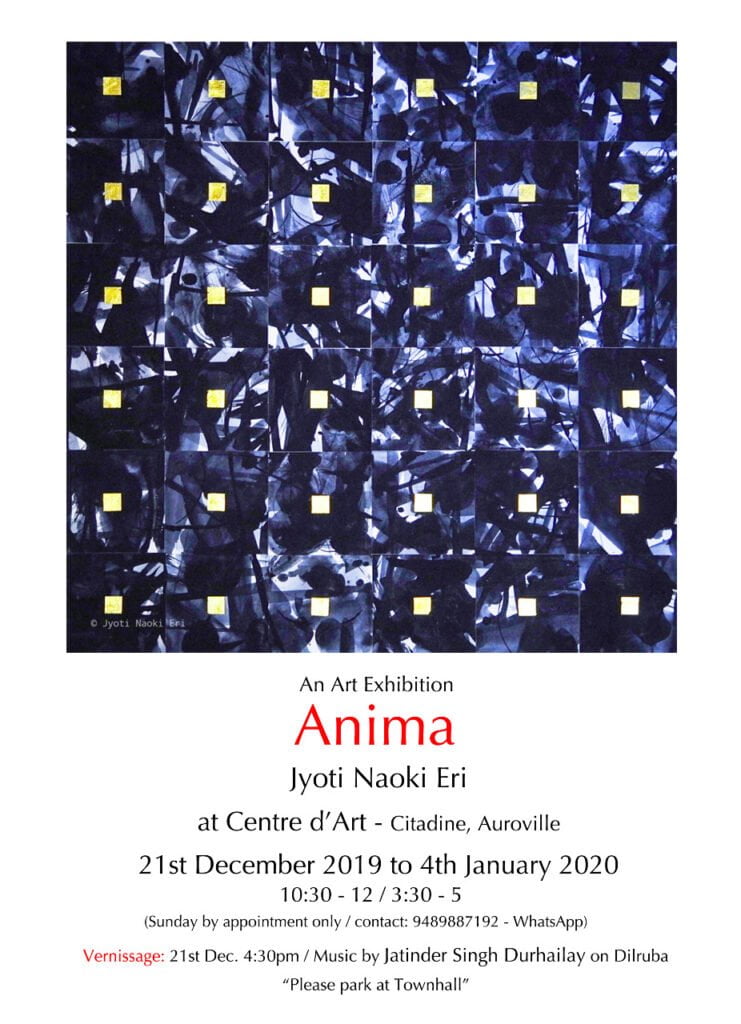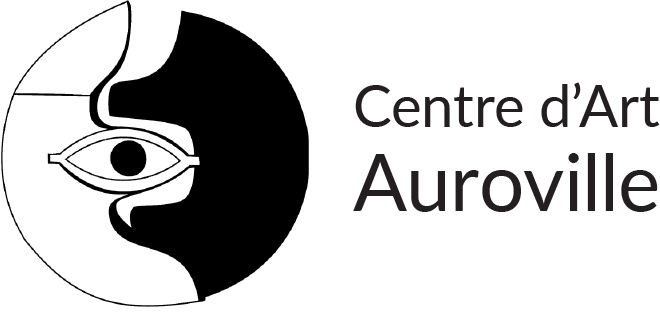By Jyoti Naoki
21st December to 4th January 2020
Opening 21st December at 4.30pm

ANIMA is the name Jyoti Naoki Eri chose for his new exhibition. ‘Anima’, in Latin, is the soul – something which is also animated, endowed with movement. Jyoti, being Japanese has an animist background that has led him to look for the divine everywhere – in all manifestations of life, in all forms of nature. Similarly to an entomologist or an astrophysicist, he studies the emanations and metamorphoses of nature, tracing them in spaces where only the void seems to be ruling. He invents new equations.
Jyoti is a polyhedral artist: he is a painter, a sculptor, a photographer, a ceramist, a designer, a garden designer. Having no fear of contaminations, he crosses the border between different disciplines, experimenting hybridizations and trying, perhaps, to create new life forms or test some theories.
He works in series and pushes himself till the end of the paths he has traced, paths that are constraints he imposes on himself as a kind of framing, not being able to take a break and concluding a series only after exhausting all possibilities – by his own admission. His creative process stems from all his experiences, from all his discoveries – by all means, he is a yoga.
In this exhibition, which is the result of over four years’ explorations, some of his works are a combination of painting, sculpting, and photography.
Three main series emerge.
The series named ‘Vessel’, in the form of a vase or that of a mannequin in human form, questions the duality ‘soul/body’ and its relationship with the universe. The vase, like the body, is the container. Can we really apprehend what the content, the soul, would be? What is the shape and color of the soul? Is it inside? Is it outside? What happens in the middle? What fascinates the artist is this in-between that separates two sides, it is the border. In a hypnotic game between the object and the background, he reverses the chromatic fields, substitutes the full with the empty, the inside with the outside, the depth with the surface. Dazzling tones distract the retina from what is woven into the invisible, just as a magician diverts the attention of his audience. What the artist suggests is that, perhaps, behind the appearance, our substance and that of the world are the same, and that our otherness, after all, is merely an optical illusion.
In the ‘Windows’ series Jyoti uses the calligraphy, eliminating the writing and keeping the sole gesture. He loves the moment when the line becomes totally spontaneous, a plan of action drawn in the moment.
At times he chooses the indigo and obtains a monochrome composition; other times, according to his mood, the colors are bright and varied, and other times he mixes them. For the final composition is fragmented into squares and then recomposed. Each new bit, bearing a small golden square in its center, in its divine core, is a window, a world in itself, which acquires a new meaning according to its position in the composition and the way it combines with the whole. This visual abstraction symbolizes for Jyoti the reincarnation of the soul, which, freed from the previous existence, can start a new life. Each movement, either fragmented or as a whole, is a different aspect of the divine, in progress.
And, again, windows are also present in the third series proposed by the artist, the most recent, entitled ‘Lotus’. While the symbolism is still predominant, with the choice of the gold leaf squares floating between for and background, Lotus marks a return to the figurative representation, a change inspired by a deep inner requirement.
“It was natural that I needed the clarity of the lotus to complete the creative journey of the Vessels through these kaleidoscopic windows. Vessels are life in all its complexity divine and mysterious” – explains Jyoti – “An artist does not only work on positive emotions, and sometimes it’s just too much to bear. This new series responds to a need. I wanted an answer, and I got it”.
The answer of Jyoti stands before us today, exposed in its magnificent evidence: the man who is the window, the man who is the instrument finds here the absolute bliss of the divine presence in all the levels of creation, and manifests the joy of the being who acknowledges in itself the almost forgotten secret of its own truth.
Dominique Jacques, December 2019
